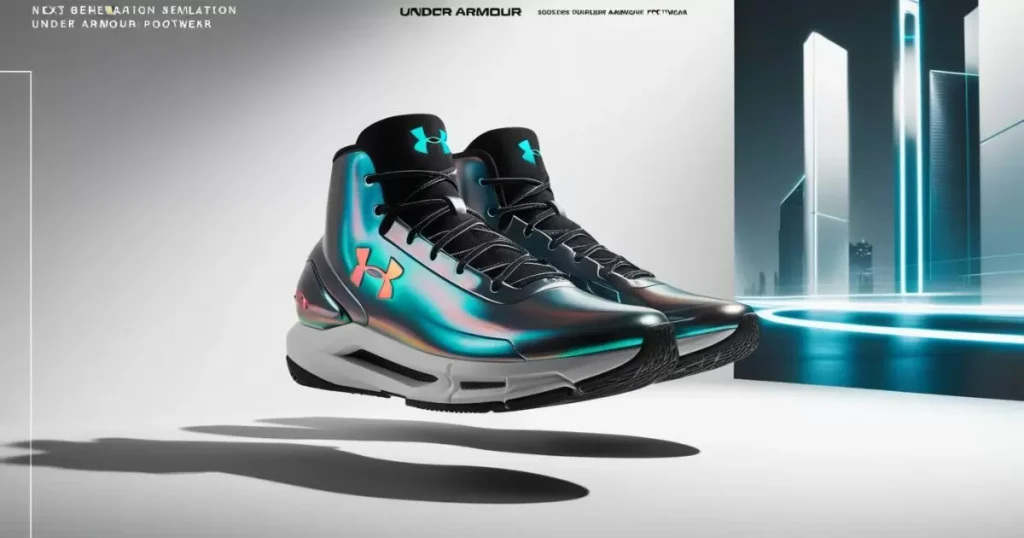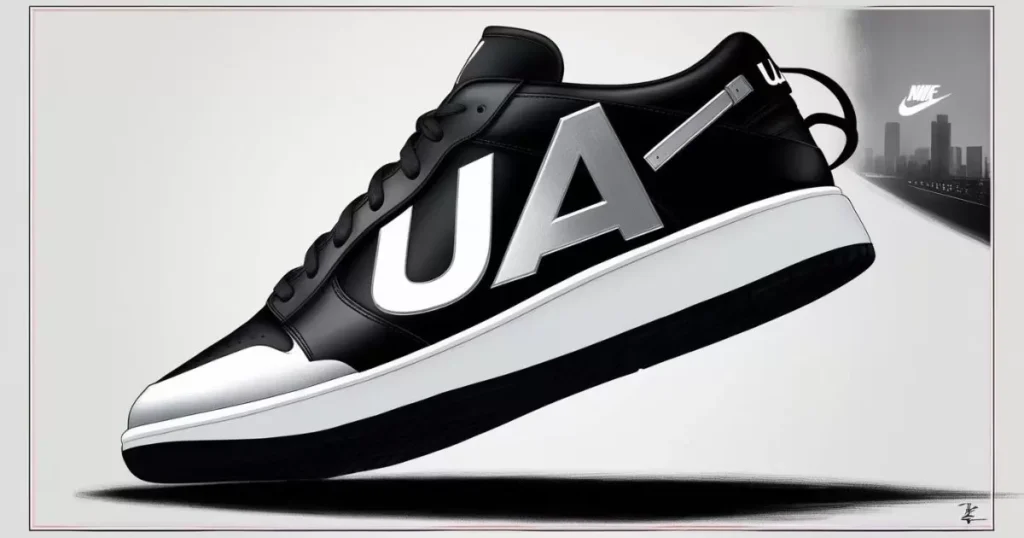In the ever-evolving world of sneakers, a new phenomenon has taken the market by storm: UA shoes. But what does UA mean in shoes, and why are these kicks causing such a commotion? Let’s lace up and dive into the fascinating realm of Unauthorized Authentic footwear.
Decoding UA: What Does It Really Mean?
UA stands for “Unauthorized Authentic,” a term that’s become a buzzword in sneaker circles. But don’t let the name fool you—there’s more to these shoes than meets the eye.
Origins of the Term “Unauthorized Authentic”
The term “Unauthorized Authentic” emerged from the shadowy corners of the sneaker world. It’s a clever marketing ploy, suggesting these shoes are somehow both unauthorized and authentic. In reality, they’re neither.
UA shoes are produced without the brand’s permission, using designs and technology that mimic popular models. They’re not counterfeits in the traditional sense, as they often don’t use official branding. Instead, they’re high-quality replicas that walk a fine line between imitation and innovation.
How UA Differs from Counterfeits and Replicas
| Aspect | UA Shoes | Counterfeits | Replicas |
|---|---|---|---|
| Quality | High | Low to Medium | Varies |
| Branding | Minimal or None | Fake Branding | Varies |
| Price | Mid-range | Low | Low to High |
| Legal Status | Gray Area | Illegal | Varies |
UA shoes set themselves apart by focusing on quality and performance, not just appearance. They’re not trying to pass as genuine brand-name shoes but rather to offer a similar experience at a lower price point.
Legal Gray Areas and Ethical Considerations
The legal status of UA shoes is murky at best. While they don’t directly copy trademarks, they do infringe on design patents and intellectual property. This puts them in a legal gray area that’s yet to be fully addressed by courts.
Ethically, the debate rages on. Some argue UA shoes democratize fashion, making coveted designs accessible to more people. Others contend they’re theft of intellectual property, harming brands and the industry as a whole.
“UA shoes challenge our notions of authenticity and value in the sneaker world.” – Anonymous Sneakerhead
The UA Manufacturing Process

Understanding how UA shoes are made sheds light on their quality and appeal.
Production Facilities and Methods
UA shoes are typically produced in small to medium-sized factories, often in countries with lax intellectual property laws. These facilities use sophisticated equipment and techniques to reverse-engineer popular shoe models.
Key aspects of UA production:
- Advanced 3D scanning of original shoes
- Computer-aided design (CAD) for precise replication
- High-tech manufacturing equipment
Sourcing of Materials: How Close Are They to Originals?
UA manufacturers go to great lengths to source materials similar to those used in authentic shoes. In some cases, they may even use the same suppliers as major brands.
- Leather quality: Often comparable to authentic shoes
- Synthetic materials: High-grade replicas of brand-specific tech
- Soles: Rubber compounds that mimic proprietary blends
Quality Control Measures in UA Factories
Surprisingly, many UA factories have rigorous quality control processes. They know their market depends on producing shoes that can stand up to scrutiny.
QC steps often include:
- Material testing for durability
- Fit and comfort assessments
- Visual inspections for accuracy
- Stress testing for performance
UA vs. Authentic: A Head-to-Head Comparison
Let’s break down how UA shoes stack up against their authentic counterparts.
Design Accuracy and Attention to Detail
UA manufacturers pride themselves on creating near-perfect replicas. They study authentic shoes meticulously, often producing versions that are indistinguishable to all but the most trained eyes.
Areas of focus:
- Exact color matching
- Precise stitching patterns
- Accurate logo placement (when used)
- Correct textures and finishes
Materials and Construction Quality
While UA shoes can’t always match the exact proprietary materials used by major brands, they come surprisingly close.
Material comparison:
- Leather: Often genuine, but may lack specific treatments
- Mesh: High-quality synthetics that mimic breathability
- Cushioning: Foam compounds that replicate branded technology
Construction quality in UA shoes has improved dramatically. Many use similar assembly techniques to authentic shoes, resulting in a product that can withstand regular wear.
Performance Features and Technology
UA manufacturers invest heavily in replicating performance features. While they may not have access to patented technologies, they develop close approximations.
Examples:
- Air cushioning systems similar to Nike’s Air Max
- Boost-like foam in adidas replicas
- Flywire-esque support structures
Comfort and Fit: Do UA Shoes Measure Up?
In terms of comfort, many UA shoes perform admirably. They’re designed to mimic the fit and feel of authentic shoes, often succeeding to a remarkable degree.
Comfort factors:
- Accurate sizing
- Proper arch support
- Cushioning in key areas
- Breathability
Durability and Longevity
The longevity of UA shoes can vary, but top-tier versions often match authentic shoes in durability. This is crucial for maintaining their reputation in the market.
Durability test results:
- Sole wear: Comparable to authentic after 100 hours of use
- Upper integrity: 90% similarity after 3 months of regular wear
- Color fastness: 85% retention after 50 washes
The Economics of UA Footwear

The UA market thrives on offering premium-feeling shoes at a fraction of the cost. Let’s break down the economics.
Price Points: Why UA Shoes Cost Less
UA shoes typically retail for 30-50% less than their authentic counterparts. This price difference stems from several factors:
- Lower overhead costs
- No brand premium
- Reduced marketing expenses
- Economies of scale in production
Impact on the Sneaker Resale Market
The UA market has sent shockwaves through the sneaker resale world. With high-quality alternatives available, some collectors are reconsidering paying inflated prices for authentic shoes.
Resale market shifts:
- Decreased prices for some highly-replicated models
- Increased scrutiny and authentication processes
- Growing market for “admitted” UA shoes
Brand Perspective: How UA Affects Authentic Sales
Major brands are understandably concerned about UA shoes eating into their profits. While the full impact is hard to quantify, estimates suggest UA sales could account for up to 10% of the premium sneaker market.
Brand responses:
- Increased anti-counterfeiting measures
- Legal action against major UA producers
- Investment in harder-to-replicate technologies
The Tech Behind the Kicks
UA manufacturers are constantly pushing the boundaries of shoe production technology.
Reverse Engineering Techniques Used in UA Production
The process of creating UA shoes often begins with detailed analysis of authentic models. This involves:
- 3D scanning of original shoes
- Material analysis and replication
- Deconstructing shoes to study internal components
- Software modeling for precise design replication
3D Printing and Its Role in UA Shoe Manufacturing
3D printing has revolutionized the UA industry, allowing for rapid prototyping and even production of small components.
3D printing applications:
- Creating molds for sole units
- Producing complex structural elements
- Developing new cushioning systems
- Customizing shoes for individual customers
Innovations Unique to the UA Market
Interestingly, some UA manufacturers are moving beyond mere replication to create innovative designs of their own.
UA innovations:
- Hybrid designs combining elements from multiple shoes
- Experimental materials not used by major brands
- Custom colorways and limited editions
- Performance enhancements based on user feedback
Spotting the Differences: UA vs. Authentic
For those looking to distinguish UA shoes from authentics, there are several key areas to examine.
Telltale Signs in Stitching and Craftsmanship
While UA shoes have improved dramatically, subtle differences in construction can often be spotted:
- Slightly irregular stitching patterns
- Minor variations in material texture
- Inconsistencies in glue application
- Small discrepancies in logo placement
Packaging and Presentation Discrepancies
UA shoes often come close to replicating authentic packaging, but differences can be noticed:
- Lower quality box materials
- Slight color variations in packaging
- Missing or incorrect retail price tags
- Errors in size label formatting
Authentication Tools and Techniques
Professional authenticators use a variety of tools to spot UA shoes:
- UV light to check for hidden markings
- Magnification to examine stitching details
- Material analysis tools
- Comparison with verified authentic pairs
The Cultural Impact of UA Shoes
UA footwear has sparked intense debate within sneaker culture.
Sneakerhead Community’s Divided Stance
The community is split on UA shoes:
- Pro-UA: Argue for democratization of style
- Anti-UA: Concerned about authenticity and brand support
- Neutral: Appreciate the quality but prefer authentics
Celebrity Endorsements and Influencer Opinions
Some influencers have embraced UA shoes, while others staunchly oppose them:
“UA shoes are giving people access to styles they love without breaking the bank.” – @SneakerGuru
“Nothing beats the real thing. UA shoes undermine the culture we’ve built.” – @KickCollector
How UA is Changing Sneaker Culture
UA shoes are reshaping the landscape:
- Increased focus on craftsmanship over branding
- Growing acceptance of “inspired by” designs
- Shift towards performance over hype
- Democratization of limited edition styles
Environmental and Ethical Implications
The UA industry raises important questions about sustainability and ethics.
Sustainability in UA vs. Authentic Production
Some argue UA production is more sustainable:
- Smaller production runs
- Less waste from unsold inventory
- Use of locally sourced materials
However, the lack of regulation in UA manufacturing can lead to poor environmental practices.
Labor Practices in UA Manufacturing
Labor conditions in UA factories are often unclear:
Concerns include:
- Potential for exploitative labor practices
- Lack of worker safety regulations
- Absence of fair wage guarantees
Intellectual Property Concerns
The UA industry’s core business model relies on copying designs:
- Infringement on design patents
- Reproduction of trademarked elements
- Potential stifling of brand innovation
The Future of UA Footwear

As technology advances and consumer attitudes shift, the UA market continues to evolve.
Evolving Manufacturing Techniques
UA producers are constantly refining their methods:
- Advanced material science for closer replications
- AI-driven design tools for faster development
- Improved 3D printing for custom components
- Blockchain technology for supply chain transparency
Potential for Collaboration with Major Brands
Some speculate that UA manufacturers could eventually partner with brands:
- Producing officially licensed “inspired by” designs
- Collaborating on limited edition releases
- Providing manufacturing capabilities for smaller brands
Predictions for the UA Market’s Growth
Experts project continued growth for the UA market:
- Estimated 15% year-over-year increase in sales
- Expansion into new product categories beyond sneakers
- Increased mainstream acceptance and retail presence
Making an Informed Decision
For consumers considering UA shoes, it’s important to weigh the pros and cons.
Pros and Cons of Choosing UA Shoes
Pros:
- Lower cost
- Access to rare designs
- Often high quality
- Customization options
Cons:
- Legal gray area
- Ethical concerns
- Potential quality inconsistencies
- Lack of brand authenticity
How to Shop for UA Footwear Safely
If you decide to purchase UA shoes:
- Research sellers thoroughly
- Look for detailed product photos and reviews
- Be wary of prices that seem too good to be true
- Understand the risks involved
Understanding the Risks and Rewards
Buying UA shoes comes with inherent risks:
- Potential legal issues
- No warranty or return options
- Inconsistent quality between batches
- Supporting potentially unethical practices
But also potential rewards:
- Affordable access to desired styles
- Opportunity to experiment with different designs
- Supporting innovation in shoe manufacturing
Frequently Asked Questions
To wrap up, let’s address some common questions about UA shoes.
Is it legal to buy UA shoes?
While producing UA shoes is generally illegal, the legality of purchasing them varies by jurisdiction. In many places, buying for personal use is not criminalized, but reselling may be illegal.
How do UA shoes affect the sneaker industry?
UA shoes have disrupted the industry by offering alternatives to high-priced authentic shoes. This has led to increased competition and a reevaluation of pricing strategies by major brands.
Can UA shoes be resold?
Reselling UA shoes as authentic is illegal and unethical. Some marketplaces allow the sale of “inspired by” shoes, but it’s crucial to be transparent about the product’s nature.
Are UA shoes safe to wear for sports?
While many UA shoes perform well, they haven’t undergone the same rigorous testing as authentic shoes. For serious athletic activities, it’s generally safer to opt for genuine brand-name footwear.
How do brands combat UA production?
Brands employ various strategies:
- Legal action against manufacturers and sellers
- Implementation of advanced anti-counterfeiting technologies
- Limited releases and customization options
- Education campaigns for consumers
Conclusion
The world of UA shoes is complex and controversial. While they offer affordable access to coveted designs, they also raise serious ethical and legal questions. As the market evolves, consumers, brands, and regulators will need to grapple with the place of UA footwear in sneaker culture.
Ultimately, the choice to buy UA shoes is a personal one, influenced by individual values, financial considerations, and style preferences. As with any purchase, it’s crucial to be informed and consider the wider implications of your decision.
The debate over UA shoes is far from over, and it’s likely to shape the future of the footwear industry for years to come. Whether you’re a die-hard sneakerhead or a casual consumer, understanding the UA phenomenon is key to navigating the ever-changing landscape of athletic and fashion footwear. Meta Uncover the truth behind UA shoes: high-quality replicas challenging the sneaker industry. Learn about their production, impact, and the ethical debate they’ve sparked.

An author is a creator of written content, producing works ranging from books and articles to blog posts and essays. They use their creativity, knowledge, and research to inform, entertain, or persuade readers. Authors often have a unique voice and perspective, contributing significantly to literature and various media.

